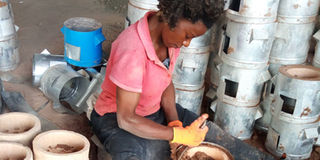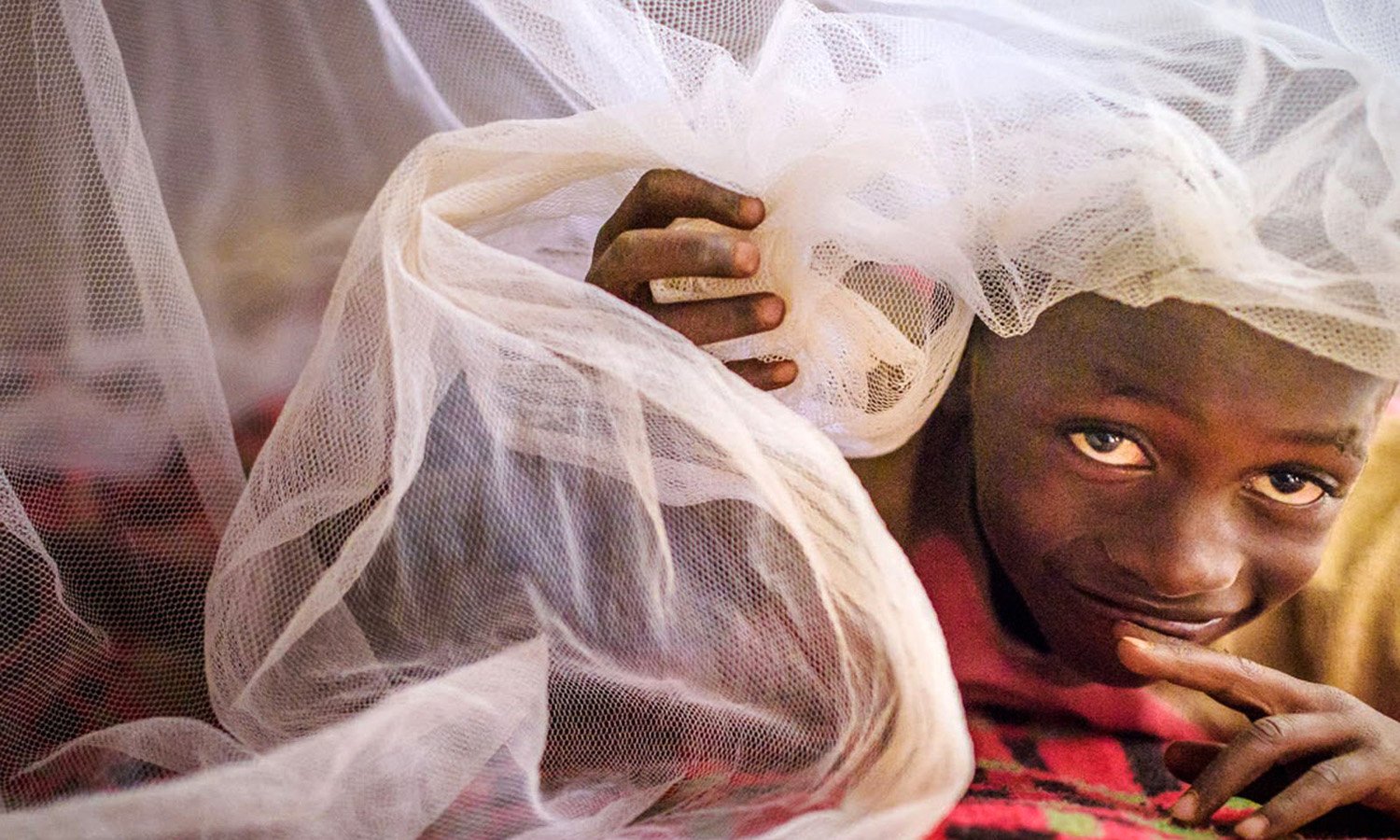Cook your way to a safe environment

Fatuma Nakaggwa compacting a mixture of mica and sow dust around a clay shelf mixed with cement before packaging it into a circular metallic shelf to make a charcoal stove. PHOTO BY ROLAND NASASIRA
What you need to know:
- In 2012, 14.1 percent of Uganda’s land area was covered with forests.
- The land available is becoming scarce and households prefer to use the land for food crops rather than planting trees.
- Since 1990, the forested area decreased from 49,240 square kilometres down to 29,880 square kilometres.
Barbra Nanyonga, is a resident of Katega village, Kabembe parish in Kyampisi Sub County in Mukono District. She is one of the few mothers who have embraced the technology of using energy saving stoves manufactured by Bold Energy after realising that she can save on her daily home expenditures.
Initially, she would use approximately Shs2,000 on charcoal to prepare both food and sauce for her family daily.
“For the one year I have been using the energy stove, I can now afford to save Shs1, 000 on a daily basis. I buy briquettes of Shs1,000 and use them the whole day. I remain with a small balance to start with the next day,” Nanyonga explains.
“After lighting the stove, it is able to absorb and retain heat for approximately six hours. When I close the stove ventilators, the briquettes burn steadily for a long time. As they burn, the stove stores some of the heat in its thick body and uses it to cook food when the briquettes burn out,” Nanyonga adds.
Fast and reliable
Brenda Kafuko, also a resident of Kabembe parish prides in using the energy saving stove at her home. For the 18 months she has used the energy stove, she sasy has found it to be a quick and reliable means of cooking compared to an ordinary charcoal stove where charcoal burns out in a space of 90 minutes.
“After lighting the stove, I prepare meals for my family in an hour’s time. Even when the charcoal is burnt out, I still continue to cook because the stove has a thick body all around it that absorbs and transmits heat to the saucepan when I need it,” Kafuko says.
Unlike Nanyonga, Kafuko recalls she initially used to spend Shs3,000 daily. With the energy saving stove, she is now able to use briquettes of Shs1,000. When she is to cook beans that take a somewhat long time to get ready, she uses charcoal of Shs1,500. This means that she is able to save Shs1,500 on charcoal alone.
Changing energy behaviour change
Ronald Rwankangi, the chief executive Officer of Bold Energy that manufactures energy saving stoves, with production factories in Mbarara and Mukono, says the motivation behind investing in the manufacture of these stoves is to ensure that Uganda’s population uses stoves that do not only save the environment but also save upto 40 percent of charcoal and wood fuel.
This corroborated the 2018 energy week theme of transforming Uganda’s energy sector through increased innovation, investment and integration for future sustainability that run from September 24 to September 29, with energy exhibitors at Kampala Capital City Authority grounds at Lugogo in Kampala.
“We would like to see a mind-set and behaviour change among the rural and urban population. People should embrace clean cooking energy instead of running to cut down a tree every time you think of energy for cooking. If you use the energy stoves, it allows you use charcoal responsibly,” Rwankangi explains.
Energypedia, an online portal observes that Uganda’s energy problem situation deteriorates annually. Wood fuels are largely used for cooking in rural areas while charcoal mostly provides for the cooking needs of the urban population. High demand for wood fuels used inefficiently results in overuse and depletion of forests.
In 2012, 14.1 percent of Uganda’s land area was covered with forests. The land available is becoming scarce and households prefer to use the land for food crops rather than planting trees. Since 1990, the forested area decreased from 49,240 square kilometres down to 29,880 square kilometres. This means that from 1990 until 2010, more than 19,360 square kilometres, about 39 percent of the existing forests disappeared. Currently about 90,000 hectares which is 900 square kilometres of forest cover are lost annually, which leads to fuel wood scarcity in rural areas and increasing price levels of charcoal and fuel wood.
How the stoves are manufactured
Ibra Agaba, the factory manager at Bold Energy in Mukono explains that energy saving stoves are manufactured with clay, mica, sow dust, and cement. These materials serve as heat insulators and prevent external air from entering the stove.
“On heating, the thick component made of clay that is a combination of mica and cement becomes red due to intense heat. When you close the stove ventilators, the mica component prevents heat loss and external air intrusion. This makes sure that the charcoal used in the stove burns steadily without the need of adding more charcoal as you cook,” Agaba explains.
At the factory, size one or the smallest of the stoves costs Shs13, 000 while the second smallest costs Shs17,000. The third size costs Shs22, 000. Different sizes of stoves cost differently because they are used in different places. There are also stoves that can be used in restaurants and schools that serve many people as well as those used for long charcoal stoves for nyama choma.
“Energy saving stoves are accessible to the rural and urban populations at affordable prices. As we focus on production, there are partners who carry our supply and distribution within and around Kampala. The plan is to make these stoves accessible to the population from all parts of the country to reduce deforestation,” Rwankangi concludes.




